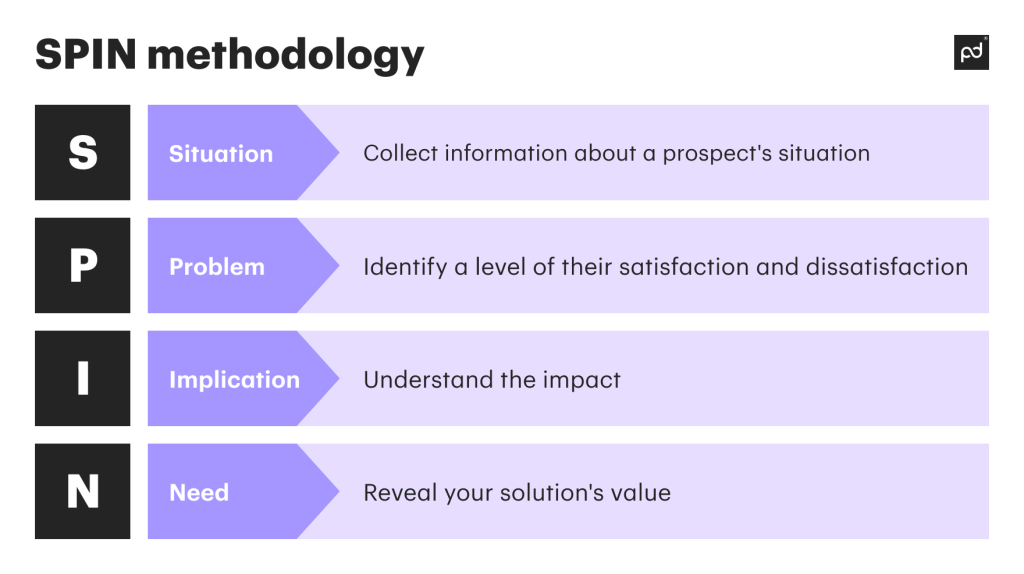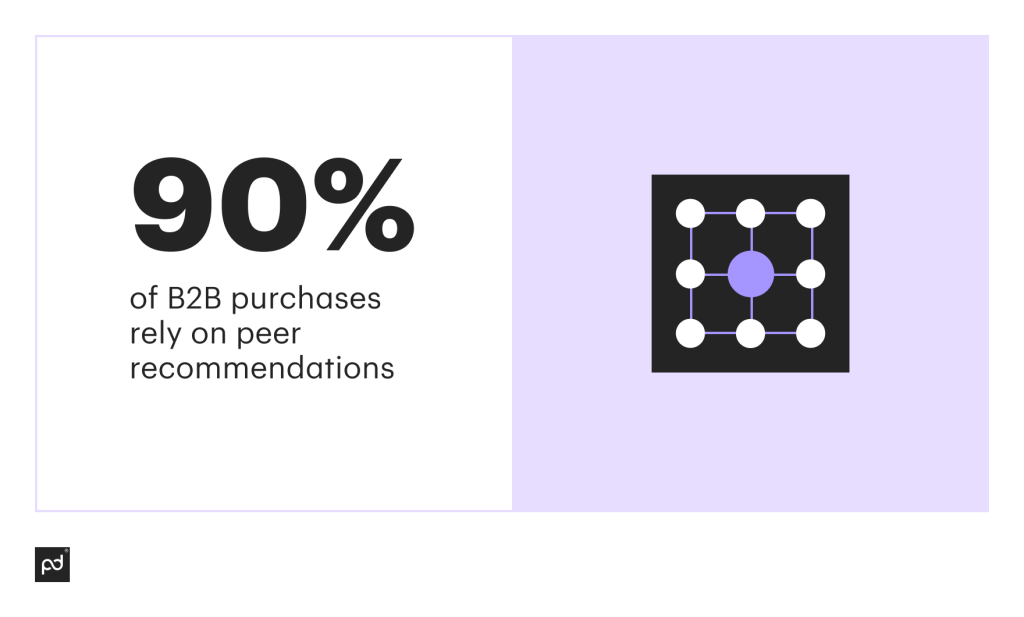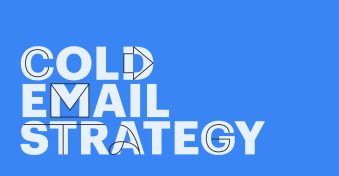If you are a business, then you are well aware of what a sales cycle is.
It is a repeatable process salespeople follow to turn a lead into a customer.
These days, there is a tendency toward sales cycles becoming slower.
In the Demand Gen Report 2020, 68% of B2B respondents stated that their purchasing cycle is longer when compared to the previous year — which clearly contributes to all sales, on average, taking longer to close.
This is occurring due to the change in both buying behavior and an increase in decision-makers in companies.
Gartner states that the average B2B buying process includes 6 to 10 decision-makers, each with their own touchpoints they want to discuss with a potential partner.
One solution to effectively speeding up your sales cycle is to optimize the sales processes within your company.
Luckily for you, we have collected 12 ways on how to do so efficiently.
There are tactics as well as automation tools — like proposal software or contract management software — that you can immediately apply to accelerate your sales cycle.
Ready to learn more? Let’s go!
What is a sales cycle?
First of all, let’s define what a sales cycle is.
A sales cycle is a set of repetitive steps that salespeople undertake to turn a lead into a customer. A typical sales cycle include the following steps:
- Finding leads
- Connecting with leads
- Qualifying leads
- Presenting a product to prospects
- Overcoming objections
- Closing the deal and nurturing new customers
It is in the best interest of businesses to have a sales cycle in place. It serves as a roadmap for all sales reps — they know the exact steps and processes they need to follow to close a sale.
Well-defined steps also help to understand where a prospect is in the buyer’s journey and concentrate efforts into leading that prospect to the next stage.
And finally, it provides a clear picture of every process in detail in order to refine and improve them.
Sales cycles can be long or short.
A long sales cycle usually takes over a year from initial interaction to closing the deal.
It is a typical timeframe for complex and high-value software and services that require customization, consultation or research.
Long sales cycles usually involve many decision-makers who spend time researching or trying a product before making a final decision.
A short sales cycle refers to making a sale in less than a month or, at most, within a few months.
Short sales cycles involve fewer decision-makers who need very little information to arrive at a yes or no conclusion.
Short sales cycles are suitable for low-cost or low-risk products and services.
They usually have a simple sales process, making it a favorite type of a cycle for many customers as long as you help them solve their problems.
12 ways to accelerate your sales cycle
Most businesses strive to reduce the sales cycle as much as possible.
It is doable by revising and improving a sales process.
Here are 12 proven ways to speed up a sales cycle.
1. Talk to decision-makers
A well-established way to accelerate the sales cycle is to directly reach out to decision-makers.
Decision-makers are those in your target organization who have the authority to make a buying decision and oversee the purchasing budget.
When you reach out to decision-makers from the beginning, you can better understand whether your product is relevant to their organization and if it’s worth spending your efforts on these prospects.
A common mistake companies make is when they try to sell a product to the wrong prospects. (Like when a seller from a software company tries to reach out to an IT department.)
So push your efforts into identifying your decision-makers. Talk to your marketing and sales teams and find out who your top-performing customers and leads are.
Closely examine your biggest deals and faster sales cycles. Identify who the people your sales team operated with the most.
Use CRM to generate insights about your clientele. Consider their title, job responsibilities, company size, and industry.
Collecting and compounding this information creates the base for an ideal buyer persona — a range of characteristics you lean on while looking for decision-makers among target organizations.
These questions will keep you on the right track:
- What industry is your prospect in? Be specific — for example, instead of answering “Healthcare industry” change to “Healthcare companies serving Fortune 500 businesses.”
- What is the company’s size?
- What is the company’s budget?
- Where is your prospect located?
- What is their market position?
- What problems is your prospect facing? What are their goals?
- How does your product solve their problem or help them achieve their goals?
2. Know your prospect’s pain points
Now that you know who your decision-maker is, find out everything you can about their pain points.
Prospects are more likely to make a decision if they feel that your product alleviates their pain points.
By figuring these out and clearly addressing them with your solution, you have more chances to involve them in a sales pipeline and speed up a sales cycle.
Start with researching what your prospects share on their social channels like LinkedIn or Facebook. The posts they share might include topics or directions relevant to the company strategy.
When reaching out to decision-makers, ask them probing questions.
Follow the SPIN methodology, which consists of four types of questions that reveal a prospect’s needs, pain points, and challenges.

Each aspect corresponds to a concrete stage in the sales process — opening, investigation, demonstrating capability, and obtaining commitment.
- Situation questions help to collect information about a prospect’s current situation — “What type of software are you using?”
- Problem questions help to identify a level of their satisfaction or dissatisfaction — “Are you satisfied with your current software?”
- Implication questions help understand the impact a problem has on a prospect’s business — “How much productivity do you lose when your software breaks down?”
- Need questions are useful in revealing your solution’s value — “How much would it help your business to have more reliable software?”
When talking to your prospects, always pay attention to what questions they ask and what wording they use.
For example, if a buyer asks “Is there a direct correlation between my investment and ROI?”, it might indicate that your potential client has a budget and is interested in your ability to scale.
A good working plan is to segment pain points into categories.
It helps you sell with a specific strategy in mind, which speeds up the sales cycle. There are four such categories:
Prospect wants to make money
Prospects who want to make money usually speak about sales, revenue, and growth targets.
Show them case studies of your company that demonstrate ROI and avoid using vague phrases like “Our solution will increase your profit.”
Prospect wants to save money
Prospects who want to save money talk about reducing costs and redundancies.
These buyers are usually sensitive to money, so try to demonstrate ROI through testimonials and well-written case studies.
Prospect wants to reduce time or effort
When buyers say phrases like “it takes a lot of time to accomplish a goal” or “this process is so time intensive,” mention the automation aspects of the product you’re selling.
Prospect has a human need
This type of prospect usually talks about increasing team satisfaction or boosting company culture.
A good strategy would be to show an example of a similar company that benefited in the same situation after using your product.
3. Personalize everything
Personalization is everything today — generic sales emails have almost become a thing of the past.
Remember to use a personalized approach with your customer from the beginning of the sales process. It is not only about learning their pain points, but how you speak to your prospect.
Start your email or message with their first name.
Lean on wording and points you have discussed in messages to guide further conversations. Share content and solutions that are relevant to their concerns.
These steps help to increase the level of trust between you and a prospect.
When a prospect trusts you, it is easier to proceed to the next step in a sales cycle.
4. Make pricing transparent
Prospects are not fans of hidden prices and fees.
Imagine being ready to buy a product and finding out about an unexpected cost. It’s frustrating, right?
Talk about pricing upfront with your prospects so you don’t waste their time or yours.
While it is risky to talk about price on the first or second call, it is even riskier to lose a prospect after avoiding this topic after three weeks of conversations.
When communicating about price, tell them what they can expect to pay for your product and what benefits they will receive from doing so.
Be sure to communicate these benefits after learning what sensitivities and pain points your prospect has.
Consider implementing the following tactics:
- Include pricing on your website
- Create pricing tiers
- Publish case studies and testimonials
- Integrate a pricing calculator
- Offer free trials or demos
- Ask if your prospects have pricing questions at the end of a sales pitch
5. Address objections head-on
Sales cycles are never perfect.
Your prospect will likely have concerns or perhaps even criticism toward your product. Ensure you address them early to avoid wasting your prospect’s time as well as your own.
Be an active listener. Instead of switching to a defensive posture, listen to what your prospect says about a pain point.
Ask further questions for clarification to understand the root causes of concern.
For example, if your client says that the timing for buying a solution is not perfect, ask about the roadblocks that are currently eating up the majority of their time.
After a question or two, your client might understand that your product solves their pain.
Don’t neglect to address any objections quickly and as needed.
The faster you do this, the easier it will be for you to focus your prospect’s attention on the benefits of a product and move on in a sales cycle pipeline
6. Highlight social proof
Social proof is a delicious ingredient in the recipe that makes up the sales cycle process.
It refers to the idea that people imitate their peers’ behavior regarding the products they consume.
Data shows that more than 90% of B2B sales decisions happen with peer recommendations.

There are some standard practices to convey social proof:
Share case studies
Show buyers evidence of your product’s impact and ROI.
If you have several case studies, look for those that feature a company similar to your current target.
Get mutual contact with your prospect
Use LinkedIn to make a first or second-degree connection at your target organization.
They will likely respond more to a message that starts with an introduction via their colleague than a random email.
Mention similar companies
Let it be known that you work with companies that operate in a similar market as your prospect, or that those companies face similar challenges.
It will bring more value and trust to your profile in the prospect’s eyes.
Regardless of how you use social proof, try to prioritize what other companies say about your business.
7. Focus on best-performing channels
Having a few marketing channels allows you to reach out to prospects differently.
But it is an energy-consuming activity that can prolong your sales cycle. (And you don’t want that!)
Track which channels performed the best for your team. The most commonly used B2B channels are:
- Search engine optimization (SEO)
- Pay-per-click (PPC)
- Content marketing
- Web design
- Email marketing
Once you choose the optimal channels, build up a strategy around them.
Regularly evaluate how they perform.
Just because one channel brought you leads last year doesn’t always mean it will do the same this year. Stay curious about performance and allow yourself to experiment.
8. Show your prospect a solution
Showing prospects how your product solves their needs takes work.
Often, sales managers memorize a list of benefits and present them without ascertaining whether they are what a specific customer needs.
Make sure your sales pitch solves the pain points your prospect has.
It speeds up the sales cycle when you go straight to the heart (and needs) of a buyer.
Speaking of which: Asking “Need” questions helps to communicate how your product can solve your prospect’s problem.
While these questions only discuss value, showing your solution can become much more persuasive this way.
Empower your sales team to show a customer how your solution works or offer free trials of your solution.
9. Invest in automation
Marketing and sales teams are two departments that have an endless list of management tasks.
Automating some of the time-consuming and repetitive tasks is both a big help and a relief, as it allows everyone involved to help speed up a sales process when automating creation of proposals and contracts.
Moreover, automation tools are a way to amaze your prospects with timely delivery and your modern approach.
10. Deliver proposals faster
Imagine your prospect is showing interest in buying your product. Your goal is to deliver a sharp, laser-focused proposal as fast as you can.
Leveraging pre-built proposal templates will help you to do the work in minutes instead of spending days.
You can stay in the know with real-time notifications when a proposal is opened, viewed, or completed.
These features help you jump on the next action item as a sales person.
Furthermore, proposal software is what allows different teams to be better aligned with each other. Invite stakeholders from sales or marketing to collaborate on a document simultaneously.
Seamless collaboration and easy-to-build proposals is a key to accelerating your sales cycle.
Especially when you have a number of leads in a pipeline and you need to send personalized proposals to all of them in a timely manner.
11. Simplify signing contracts
There is no better way to speed up the sales cycle than preparing contracts fast and enabling eSigning.
For example, PandaDoc’s contract management system combines creation, automation and management into a single workflow.
It has a simple approval process, signing order, and customizable user permissions to keep your team organized.
A proven way to nudge your prospects toward closing is by allowing them to sign a contract with an eSignature. It takes up to one week to collect signatures for paper contracts.
The eSignature feature allows companies to sign documents immediately, from anywhere, while simultaneously automating and digitizing a business workflow.
And an electronic signature is way more secure than a paper-based signature.
While a paper-based one can be forged, eSignatures have multiple layers of security and built-in authentication.
For example, PandaDoc’s eSignature is legally-binding, safe, and compliant to the ESIGN Act and UETA, which ensures that eSignatures have the same legal weight as handwritten signatures.
12. Align marketing with your sales team
In many companies, sales and marketing teams are strangers to each other.
In these circumstances, marketing would not bring the right lead to a salesperson.
The same applies to sales teams: they’re not likely to communicate seasonal buying insights they are unaware of.
While proposal management software or contract management systems do a good job of automating repetitive tasks and fostering communication in teams, there is something else you can do.
For example, create KPIs and OKRs that are significant for both departments.
You can have the same goals but different OKRs, as both teams have their own unique benchmarks or metrics.
Make it a rule to create a buyer persona together.
Salespeople are good at providing insights on the leads and clients they interact with, while marketing can research common characteristics.
Organize regular meetings and annual planning sessions between the teams. In that way, you will learn about each other’s processes, discuss the results of campaigns, and stay informed about new strategies.
Streamline your sales workflow with PandaDoc
Accelerating the sales cycle is a set of actions every company needs to consider to close deals faster.
While some actions require a change of processes inside a team, others require bringing teams in front of each other for collaboration.
Automation via proposal software or a contract management system can help immensely — it streamlines team communication and creates a single workflow. It also speeds up the process of creating documents.
For example, PandaDoc’s proposal software allows you to get a proposal time-to-close down to 3 minutes.
The same works for contracts — a library with pre-approved clause choices and contract templates help to get contracts out in minutes.
There are no strict rules about the ways to speed up the sales cycle. However, they all require revising and changing the processes you take to further optimize turning a lead into a customer.
Keep trying, revising, evolving — and improving! — according to your results. You got this!
Disclaimer
PandaDoc is not a law firm, or a substitute for an attorney or law firm. This page is not intended to and does not provide legal advice. Should you have legal questions on the validity of e-signatures or digital signatures and the enforceability thereof, please consult with an attorney or law firm. Use of PandaDocs services are governed by our Terms of Use and Privacy Policy.
Originally published May 30, 2019, updated April 3, 2023


